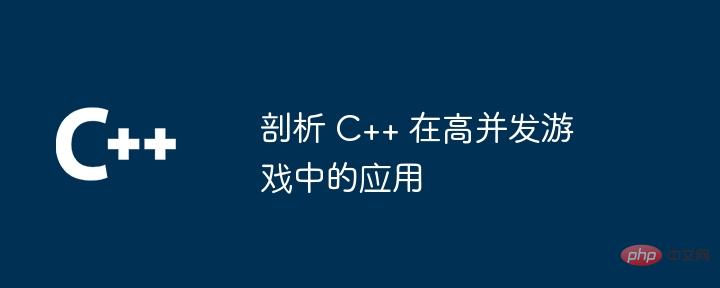
C++ plays an excellent role in high-concurrency games, thanks to its concurrency mechanism: multi-threads support simultaneous execution of tasks and avoid single-thread blocking. The locking mechanism prevents contention during concurrent data access. Lock-free data structures provide safe and efficient data access. Practical case: Multi-threaded network server: Use thread pool and lock-free queue to efficiently handle player connections. Atomic Variables: Ensure concurrent update safety when updating player properties. Advantages: High concurrency, can handle a large number of player connections at the same time. Low latency, multi-threading and lock-free data structures optimize data access. Highly memory efficient, native memory management optimizes memory usage.

Analysis of the application of C++ in high-concurrency games
Introduction
In In high-concurrency games, handling a large number of simultaneously connected players is critical to server performance. C++ has become the preferred language for such games due to its fast and efficient characteristics. This article will provide an in-depth analysis of how C++ meets the requirements of high-concurrency games and provide practical cases to illustrate.
Concurrency mechanism of C++
Case: High Concurrency Network Server
Problem: Design a network server that can handle a large number of simultaneous connections.
Solution:
Code example:
// 无锁队列
std::atomic<int> queueSize;
std::queue<PlayerRequest> requestQueue;
// 线程池
std::vector<std::thread> workerThreads;
void ProcessPlayerRequests() {
while (true) {
if (queueSize.load() > 0) {
// 从队列中获取请求并处理
auto request = requestQueue.front();
requestQueue.pop();
queueSize.fetch_sub(1);
// ... 处理请求
}
}
}
int main() {
// 初始化线程池
for (int i = 0; i < NUM_THREADS; i++) {
workerThreads.push_back(std::thread(ProcessPlayerRequests));
}
// ... 服务器主循环
return 0;
}Advantages
Conclusion
C++’s concurrency mechanism and powerful features make it an ideal choice for high-concurrency game development. By leveraging its multi-threading, locking, and lock-free data structures, developers can build efficient, low-latency servers that enhance the player experience.
The above is the detailed content of Analyzing the application of C++ in high-concurrency games. For more information, please follow other related articles on the PHP Chinese website!




